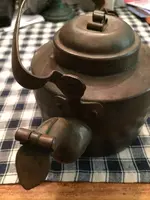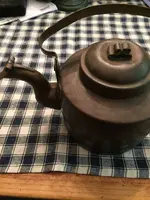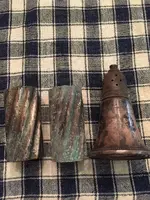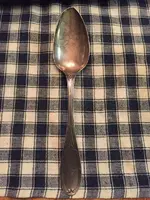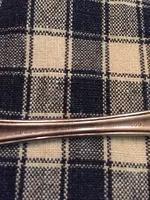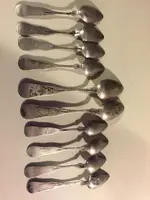captain flintlock
Hero Member
- Joined
- Jul 21, 2015
- Messages
- 942
- Reaction score
- 1,036
- Golden Thread
- 0
- Detector(s) used
- Tesoro
- Primary Interest:
- All Treasure Hunting
- #1
Thread Owner
A nice haul for the weekend starting with an early 19th century solid copper Swedish tea kettle for $2.00. At the same yard sale I also picked up these sterling s&p shakers for a whopping whole $1.00. They're crusty so if they don't clean up well I'll just put them in my scrap pile. At a local field auction yesterday, I bought a box lot with a few silver plated items and some old kitchen knives. But....... In the box was a beautiful Speer & Cosper coin silver serving spoon from Chicago circa 1852!! 1.75 ozt. All for $5.00 hammer price! I collect coin silver so I knew it was in there!! No gold but still a fun weekend!
